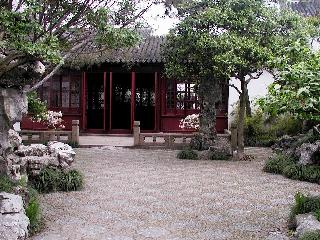
Net Theme
The grounds get their name from the abundant "net" theme that appears throughout the garden, and is most evident in the stonework in this part of the garden. The original owner, a scholar of some note, decided to retire "to the simple life of a fisherman," hence the nets.
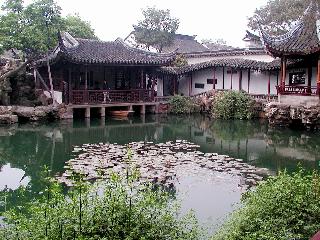
Four Elements
The Chinese garden has four essential elements: Water, stone, plants, and architecture. They are brought into harmony in these sorts of arrangements with subtle symbolism appearing throughout. For example, the water is deliberately green (the color of Jade, for good fortune.) Also, Lotus flowers are described as being the supreme flower, ascending from murk and muck in purity.
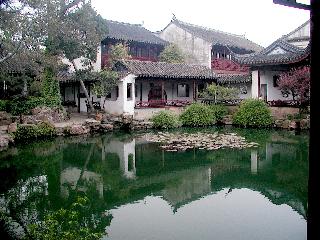
Every Angle a View
There's not supposed to be a bad view inside a masterfully designed garden. Indeed, looking back at at the location from where the previous picture was taken we see this is as pleasing as the first.
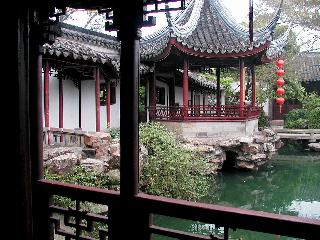
Enjoying the Moon
The pavilion shown here was designed to offer two (and later three) views of the moon: the original, its reflection, and later by a mirror hung on the wall behind it. It must be incredibly beautiful at night.
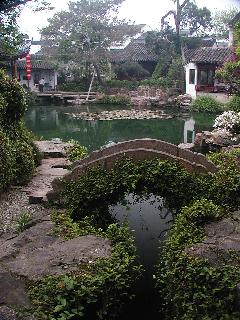
Bridge
Even this "hidden" corner offers a splendid view of the garden.
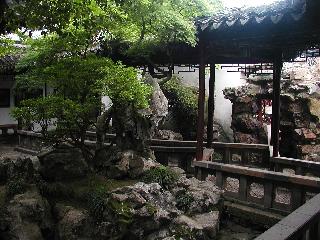
Tai Lake Rock
The unique, fluid character of the rock is deliberate; nearby Tai lake offers these specimens, which are prized in nearly every Chinese garden... some even appear in the Emperor's private gardens in the Forbidden City.
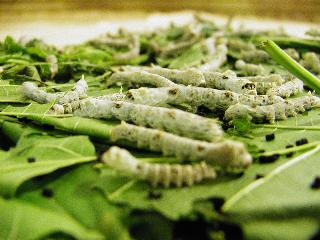
Voracious ten-day-olds
These silkworms are a mere ten days old, and have already grown almost two inches long on their diet of mulberry leaves. In another two weeks they'll become dormant as they spin their prized cocoons.
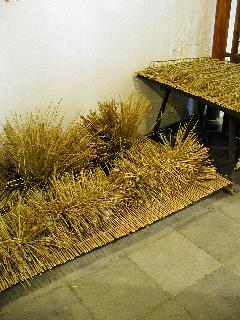
Long Slumber
The worms here have already spun their cocoons, wrapping themselves in as much as a mile of silk fiber. Spring cocoons are said to be the best, offering the longest, strongest fibers, though the harvest occurs year round.
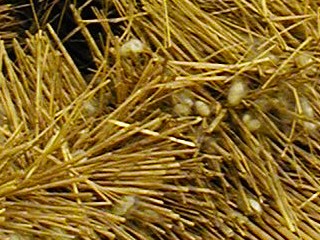
Closeup
Looking a little more closely. Most cocoons contain only a single worm pupa, though some harbor two, (and rarely three) pupae. The silk farmers harvest these bundles, selling them to the silk factories.
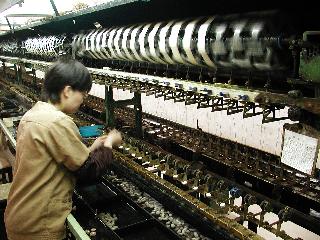
Skilled Hands
The single-worm cocoons are sorted out and are unraveled. Eight slender fibers are then spun to form a single silk thread, the basis for all silk fabric. The attendant replaces exhausted cocoons with new ones to ensure a single, continuous thread that can reach many miles in length.
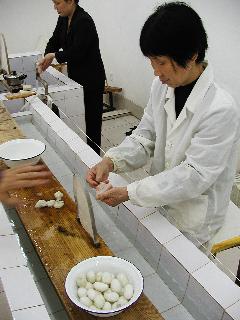
Another Fate for Twins
The double and triple cocoons are too interwoven to be unraveled, so they're destined to become the filling of silk bedding. The cocoons are pulled open, the pupae discarded, and the stringy mat is pulled over the arched bamboo form. When eight cocoons have been pulled thus, they're stretched over a larger form, until a total of eighty cocoons is reached. This is then dried and becomes the raw material for the next step.
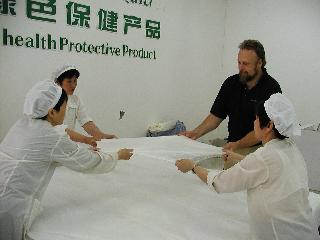
Gossamer Layer
The dried mat is pulled apart to form a single, wispy layer; up to 8,000 cocoons worth of silk are used to form a typical comforter.
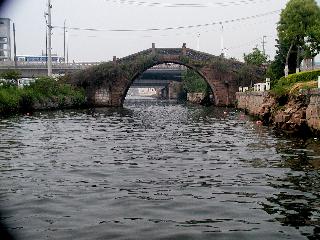
Canals
Gardens, silk, and of course, canals. Here we take a brief excursion onto one of the many canals in Suzhou. The canals are everything here: water source, road, even trash and sewer (though less so nowadays.) Bridges are a common sight throughout the city.
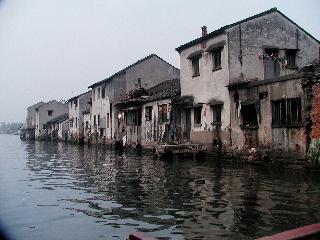
Life on the Water
Windows, even doors, face the canal, and it's an integral part of life here. Farmers carry their goods in and sell from house to house, transferring goods for money through the windows.
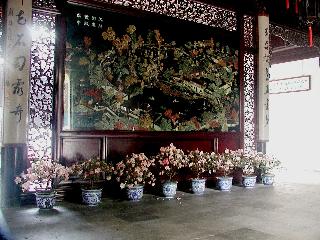
Jade Map
Celebrating a major anniversary, artisans created this jade map of the Lingering Gardens. Exquisitely carved, it illustrates not only the artisans' skill, but also the grounds which we're about to visit.
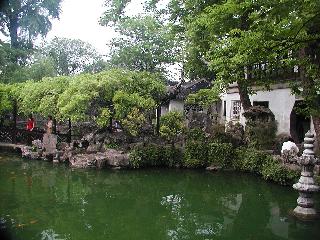
Four Elements in Harmony
Once again, the four elements are brought into harmony in this garden.
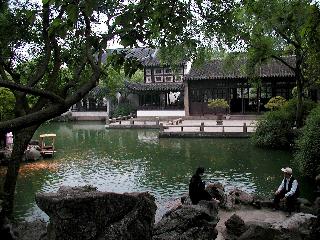
Old Couple and the Fish
An old couple feed the fish; off to the left, a little girl does the same. She seems to be having better luck.
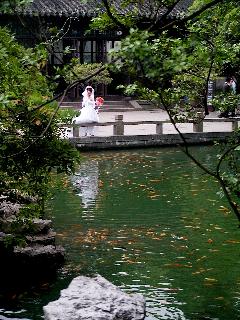
Bridal Spot
Another popular wedding spot in Suzhou, the lingering gardens seems to be a perfect spot -- especially now that very few tourists are lingering here.